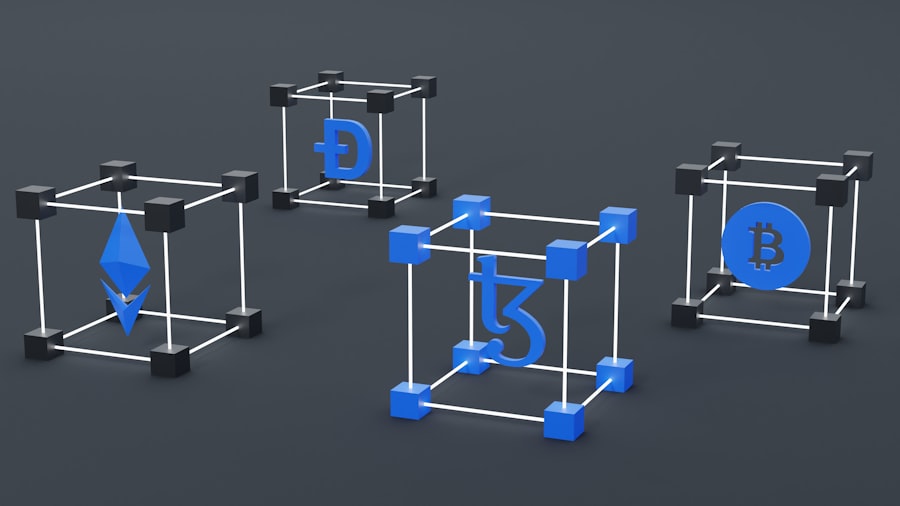In an increasingly digital world, the significance of cybersecurity cannot be overstated. As businesses and individuals alike become more reliant on technology, the potential risks associated with cyber threats have escalated dramatically. Cybersecurity encompasses a broad range of practices, technologies, and processes designed to protect networks, devices, and data from unauthorized access, attacks, or damage.
The ramifications of neglecting cybersecurity can be severe, ranging from financial losses and reputational damage to legal repercussions and operational disruptions. Organizations that fail to prioritize cybersecurity expose themselves to a myriad of threats, including data breaches, ransomware attacks, and identity theft, all of which can have devastating consequences. Moreover, the landscape of cyber threats is constantly evolving, with cybercriminals employing increasingly sophisticated tactics to exploit vulnerabilities.
This dynamic environment necessitates a proactive approach to cybersecurity, where organizations must not only implement robust security measures but also stay informed about emerging threats and trends. The importance of cybersecurity extends beyond mere compliance with regulations; it is a fundamental aspect of maintaining trust with customers and stakeholders. In an era where data privacy is paramount, businesses that demonstrate a commitment to safeguarding sensitive information are more likely to foster loyalty and confidence among their clientele.
Thus, understanding the importance of cybersecurity is not just about protecting assets; it is about ensuring the long-term viability and success of an organization in a digital age.
Key Takeaways
- Cybersecurity is crucial for protecting sensitive data and preventing cyber attacks
- Regularly assess and identify vulnerabilities in your IT infrastructure to stay ahead of potential threats
- Choose an IT security consulting service that understands your specific needs and can provide tailored solutions
- Implement multi-layered security measures to protect against various types of cyber threats
- Train employees on best practices for cybersecurity to create a culture of security awareness within the organization
- Continuously monitor and maintain security systems to ensure they are up to date and effective
- Have a plan in place for responding to and recovering from cybersecurity incidents to minimize damage and downtime
Identifying Vulnerabilities in Your IT Infrastructure
Assessing IT Infrastructure Vulnerabilities
To effectively safeguard against cyber threats, organizations must first conduct a thorough assessment of their IT infrastructure to identify potential vulnerabilities. This process involves scrutinizing hardware, software, networks, and data storage systems to pinpoint weaknesses that could be exploited by malicious actors. Common vulnerabilities may include outdated software applications, misconfigured firewalls, and inadequate access controls.
Proactive Approach to Cybersecurity
By systematically evaluating these components, organizations can gain valuable insights into their security posture and prioritize areas that require immediate attention. This proactive approach not only helps in mitigating risks but also lays the groundwork for developing a comprehensive cybersecurity strategy. In addition to technical assessments, organizations should also consider human factors that contribute to vulnerabilities within their IT infrastructure.
The Human Factor in Cybersecurity
Employees often represent the weakest link in the security chain, as they may inadvertently expose sensitive information through careless actions or lack of awareness regarding security protocols. Conducting regular security audits and penetration testing can help identify both technical and human vulnerabilities, allowing organizations to implement targeted measures to address these issues. Furthermore, fostering a culture of security awareness among employees is essential for creating a resilient organization that can effectively respond to potential threats.
Enhancing Cybersecurity Posture
By understanding the vulnerabilities present in their IT infrastructure, organizations can take informed steps toward enhancing their overall cybersecurity posture. This informed approach enables organizations to develop targeted strategies for mitigating risks and protecting their sensitive information from potential cyber threats.
Choosing the Right IT Security Consulting Service

Selecting the appropriate IT security consulting service is a critical decision that can significantly impact an organization’s cybersecurity strategy. With a plethora of options available in the market, it is essential for organizations to conduct thorough research and due diligence before making a choice. Factors such as the consultant’s expertise, industry experience, and track record in successfully mitigating cyber threats should be carefully evaluated.
Additionally, organizations should consider whether the consulting service aligns with their specific needs and objectives. A one-size-fits-all approach may not be effective; therefore, seeking a consultant that offers tailored solutions based on the unique challenges faced by the organization is paramount. Moreover, effective communication and collaboration between the organization and the consulting service are vital for achieving desired outcomes.
A reputable IT security consultant should not only possess technical expertise but also demonstrate an understanding of the organization’s culture and operational dynamics. This partnership should be built on trust and transparency, allowing for open discussions about potential risks and strategies for mitigation. Furthermore, organizations should inquire about the consultant’s approach to ongoing support and training, as cybersecurity is not a one-time effort but rather an ongoing commitment.
By choosing the right IT security consulting service, organizations can enhance their defenses against cyber threats and foster a culture of security awareness that permeates throughout the organization.
Implementing Effective Security Measures
| Security Measure | Metrics |
|---|---|
| Firewall Implementation | Number of blocked unauthorized access attempts |
| Encryption Usage | Percentage of data encrypted |
| Access Control | Number of access control violations |
| Security Training | Number of employees trained in security best practices |
Once vulnerabilities have been identified and a suitable IT security consulting service has been engaged, the next step is to implement effective security measures tailored to the organization’s specific needs. This process involves deploying a multi-layered security framework that encompasses various technologies and practices designed to protect against a wide array of cyber threats. Key components of this framework may include firewalls, intrusion detection systems, encryption protocols, and endpoint protection solutions.
By employing a combination of these tools, organizations can create a robust defense mechanism that significantly reduces the likelihood of successful cyberattacks. In addition to technological solutions, organizations must also establish clear policies and procedures governing cybersecurity practices. This includes defining access controls, data handling protocols, and incident response plans that outline how to respond in the event of a security breach.
Regularly updating these policies in response to evolving threats is crucial for maintaining an effective security posture. Furthermore, organizations should conduct routine testing and assessments of their security measures to ensure they remain effective over time. By taking a comprehensive approach to implementing security measures, organizations can create a resilient environment that not only protects against current threats but also adapts to future challenges.
Training Employees on Cybersecurity Best Practices
One of the most critical aspects of any cybersecurity strategy is employee training on best practices. Even the most advanced technological defenses can be rendered ineffective if employees are not equipped with the knowledge and skills necessary to recognize and respond to potential threats. Organizations should prioritize regular training sessions that cover essential topics such as phishing awareness, password management, and safe internet browsing habits.
By fostering a culture of cybersecurity awareness among employees, organizations can significantly reduce the risk of human error leading to security breaches. Moreover, training should not be viewed as a one-time event but rather as an ongoing process that evolves alongside emerging threats. Organizations should implement continuous education programs that keep employees informed about the latest cyber threats and trends in cybersecurity practices.
Interactive training methods such as simulations and real-world scenarios can enhance engagement and retention of information among employees. Additionally, creating an open dialogue around cybersecurity encourages employees to report suspicious activities without fear of repercussions. By investing in employee training on cybersecurity best practices, organizations empower their workforce to act as a first line of defense against cyber threats.
Monitoring and Maintaining Security Systems

The implementation of security measures is only part of an effective cybersecurity strategy; ongoing monitoring and maintenance are equally crucial for ensuring sustained protection against cyber threats. Organizations must establish robust monitoring systems that continuously assess network activity for signs of suspicious behavior or potential breaches. This may involve utilizing advanced threat detection tools that leverage artificial intelligence and machine learning algorithms to identify anomalies in real-time.
By maintaining vigilant oversight of their security systems, organizations can quickly respond to emerging threats before they escalate into significant incidents. In addition to real-time monitoring, regular maintenance of security systems is essential for keeping defenses up-to-date against evolving cyber threats. This includes routine updates to software applications, operating systems, and security protocols to address known vulnerabilities.
Organizations should also conduct periodic audits and assessments of their security infrastructure to identify areas for improvement or enhancement. Furthermore, maintaining clear documentation of security incidents and responses can provide valuable insights for refining future strategies. By prioritizing ongoing monitoring and maintenance of security systems, organizations can create a proactive defense mechanism that adapts to the ever-changing landscape of cyber threats.
Responding to and Recovering from Cybersecurity Incidents
Despite best efforts in prevention and protection, organizations must be prepared for the possibility of cybersecurity incidents occurring. Developing a comprehensive incident response plan is essential for minimizing damage and facilitating recovery in the event of a breach or attack. This plan should outline clear roles and responsibilities for team members involved in incident response, as well as procedures for identifying, containing, eradicating, and recovering from incidents.
Timely communication with stakeholders during an incident is also critical for maintaining transparency and trust. Recovery from a cybersecurity incident involves not only restoring systems and data but also conducting thorough post-incident analyses to understand what went wrong and how similar incidents can be prevented in the future. Organizations should take this opportunity to refine their cybersecurity strategies based on lessons learned from the incident.
Additionally, engaging with external experts or law enforcement may be necessary for addressing legal implications or pursuing accountability for malicious actors involved in the attack. By establishing robust incident response protocols and focusing on recovery efforts post-incident, organizations can emerge stronger from cybersecurity challenges while reinforcing their commitment to safeguarding sensitive information in an increasingly complex digital landscape.
If you’re interested in IT security consulting services, understanding the tools and software that can enhance your business operations is crucial. One such tool is Odoo, an all-in-one management software that offers a range of business applications. To learn more about how Odoo can streamline the operations of a service company, which is essential for maintaining robust IT security frameworks, you might find the article “How to Run Service Company with Odoo” particularly insightful. You can read more about it by visiting How to Run Service Company with Odoo. This article provides valuable information on leveraging Odoo for improved efficiency and security in service management.
FAQs
What are IT security consulting services?
IT security consulting services are professional services provided by experts in the field of information technology security. These services are designed to help organizations assess, plan, and implement security measures to protect their digital assets and data from cyber threats.
What do IT security consulting services typically include?
IT security consulting services typically include a range of activities such as risk assessments, security audits, security policy development, security architecture design, security training and awareness programs, incident response planning, and security technology implementation.
Why are IT security consulting services important?
IT security consulting services are important because they help organizations identify and mitigate potential security risks, comply with industry regulations and standards, and protect their sensitive data from cyber threats. By engaging with IT security consultants, organizations can improve their overall security posture and reduce the likelihood of a security breach.
How can organizations benefit from IT security consulting services?
Organizations can benefit from IT security consulting services by gaining access to specialized expertise and knowledge in the field of information security. IT security consultants can help organizations identify and address security vulnerabilities, develop effective security strategies, and implement best practices to protect their digital assets.
What are the key challenges addressed by IT security consulting services?
IT security consulting services address key challenges such as identifying and mitigating security risks, ensuring compliance with industry regulations and standards, protecting sensitive data from unauthorized access, and responding effectively to security incidents and breaches.






